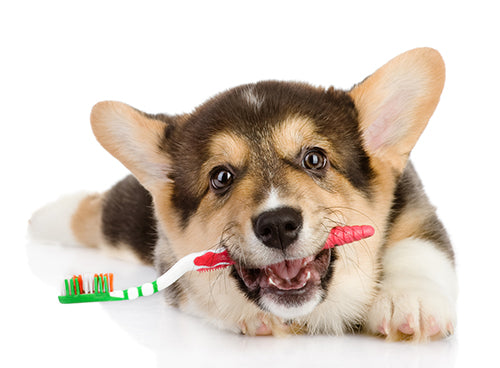Brushing the teeth of your dog is not just about fresh breath. It is a necessary part of good oral care, and good oral care is essential to the overall health of your dog. Although, most of the people are not aware of it, gum or periodontal disease is quite common, serious problem in the canines. Fortunately, dogs are not as prone to the cavities as humans are. But, dogs can still develop problems like plaque and tartar buildup and gingivitis. These dental problems in canines can actually lead to the life-threatening infections and issues including liver, heart, and kidney disease. Tooth Decay and Gum Disease is one of the five problems in the senior dogs.
Step 1: Find the Right Time
You should brush the teeth of your dog when he is calm and relaxed. Try to set a routine. Brushing daily to the dog’s teeth is ideal, but if his mouth is healthy, even three days a week can make a difference. Without brushing the teeth, plaque can easily build up, putting your dog at risk for gum disease, tooth decay and bad breath. In addition to this, it can cause painful infection.
Step 2: Gather Your Tools
You should always use a toothbrush made for dogs. The bristles of this toothbrush are softer and specially angled. The finger brushes work well for the dogs less than 30 pounds. For the larger breed of dogs, longer handles can give you better reach. Make sure to use dog toothpaste, too; as it comes in dog-friendly flavors like peanut butter or poultry. You should never use human toothpaste, as it contains ingredients that may hurt the stomach of your dog.
Step 3: Assume the Position
You should make sure that you are in a spot where your canine companion is comfortable. Do not stand above the dog, hold him down, or take a threatening stance. In spite of this, you should try kneeling or sitting in front of or to the side of your dog. After this, gauge the anxiety level of your dog. If he seems upset, then stop, and try again later.
Step 4: Get his Gums Ready
You should test the willingness of your dog. For this, touch the mouth of your dog by rubbing your finger along his upper gums and teeth. It will help him get used to the feel of something against his teeth. Try to use light pressure. You may need to get him comfortable with this over a few sessions before moving on.
Step 5: Test the Toothpaste
After this, put some dog toothpaste on your fingertip and let your dog lick this toothpaste so that he can get used to the taste and texture. After few days, if he refuses to lick more toothpaste try a different flavor. Hopefully, you will find one he sees as a treat.
Step 6: Try the Toothbrush
When your dog is used to the opening and touching of her mouth, you should start using the toothbrush and toothpaste together. Lift the upper lip of your pooch. As you approach his teeth with the toothbrush, angle the bristles so that they reach the gum line. Placing the toothbrush at a 45-degree angle against his teeth will help the bristles massage the gum line and clear away the plaque.
Step 7: Use a Circular Motion
Try to brush in small circles, getting bottom and top on each side. When you move the toothbrush bristles along the gum line, some light bleeding might occur. Slight bleeding is OK, but ongoing or heavy bleeding may mean that you are brushing too aggressively or it may be a sign of any gum disease in your canine. For this, you should speak with your vet.
Step 8: Focus on the Plaque
You should try to brush a few teeth at a time, working up to more each day. If your pooch resists at first, then try starting on the outsides of the canine and back teeth, where plaque collects. If you are able to get the insides, it is great. But if you cannot get to them as well, do not stress too much because the coarse tongue of dogs helps keep that area cleaner.
Step 9: Be Reassuring
Keep the mood light while you are brushing the teeth of your dog. Talk to your dog throughout your daily brushing, telling him exactly what you are doing. Remind your pooch what a good pup he is by stroking his jowls or patting his head.
Step 10: End on a Positive Note
When you are finished brushing the teeth of your dog, you should reward him with his favorite treat or extra attention. Also remember that good care of teeth does not end with the brushing. Certain treats and chew toys can also help you fight the buildup of plaque. Further, do not forget to schedule regular professional dental cleanings.

